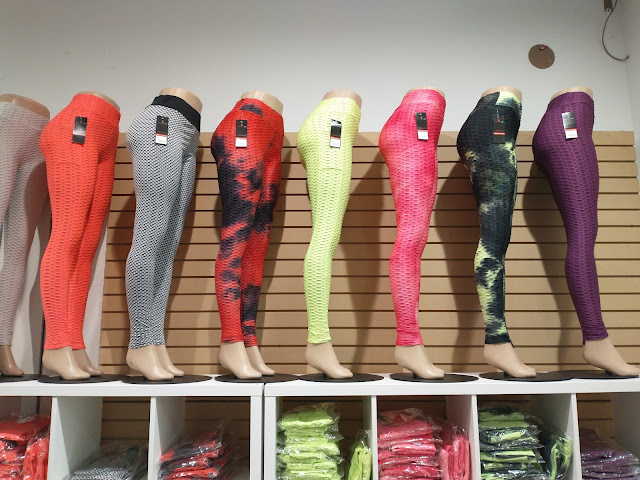Soon after I moved to James Bay I noticed an art installation in the front yard of a dentists' office, in a converted house on Cook Street.
 |
| House on Cook Street |
Even after seeing the beaches piled with it, it took me some time before I realized what this flowing art was depicting: Bull kelp!
Last month I walked with a friend along the beach along Holland Point, below Dallas Road. There was so much kelp washed up onto the shoreline that the walking was tricky. In some places over a foot of kelp lay thick. It is slippery to walk on; footholds are difficult.
 |
| Kelp along beach at Holland Point, November 14, 2021 |
 |
| Another view of the kelp, November 14, 2021 |
I have seen kelp washed up before, but this time, I decided to learn a little about what was going on.
I've learned that the west coast is rich in kelp, with over 50 species growing here. Kelp is an algae; amazingly, the huge strands I saw on the beach all grew during the summer growing season.
The kelp on the beach is Bull kelp, and a member of the brown algae family. It is considered the most plentiful kelp in the oceans of the west coast. Along the beaches of Dallas Road I can look out and see the floats of the kelp, bobbing like so many seal heads in the water.
It is kelp which gives an intoxicating pungency to the sea air along the coast here - a fragrance that I never tire of.
Kelp grows rapidly, and can become huge (as long as 80 feet)! Kelp is secured by a "holdfast" (see next image).
 |
| Kelp Holdfasts |
By fall the kelp is dying back. The kelp I saw strewn onto the beach are part of a natural cycle.
Like everything else in nature, kelp plays an essential role in the ecosystem, both when it is in the ocean, and thrown up on shore.
A few days later I walked the same beach; the high tides had removed most of the kelp I saw earlier.
 |
| The ocean reclaimed much of the kelp that was here November 14. This photo was taken four days later on November 18. |
Kelp is of critical importance to the cultures and lives of the peoples who have traditionally lived on this land. I found a good summary of the many roles played by kelp at https://nwstraits.org/media/2925/appendix_b_the-cultural-importance-of-kelp-for-pacific-northwest-tribes.pdf
One of the points which intrigued me was how kelp was seen as a "link between worlds" - between the undersea world, and the surface world. This connection is shown in the work of artist Sarah Jim, shown below.
 |
| Design on a BC Hydro box in Sidney BC, by Coast Salish artist Sarah Jim. https://www.sarahjimstudio.com/ In her artist's statement, Jim speaks about how language, culture, traditional knowledge and art are all intimately linked to the natural realm. |
Since European contact, kelp forests have been declining, A story in the independent news media The Narwhal talks about how the loss of sea otters led to an explosion of sea urchins in waters around Haida Gwaii, which in turn over-predated on kelp, leading to loss of kelp forests.
The Narwhal story describes some of the efforts being made to recreate kelp forests. See https://thenarwhal.ca/haida-gwaiis-kelp-forests-disappeared-heres-how-theyre-being-brought-back-to-life/
 |
| Researchers have used British Admirality charts to help document the historic range of kelp on the BC Coast. Source: Article on the historic distribution of kelp along the BC Coast, 1858 to 1956. Full citation at end of this post. https://www.sciencedirect.com/science/article/pii/S0143622819312160?via%3Dihub |
.
Finally - I've learned about the potential of kelp as a sustainable food source. A Canadian Geographic story discussed this - https://www.canadiangeographic.ca/article/kelp-sustainable-superfood-coming-soon-plate-near-you
Cascadia Seaweed, based in Sidney, is focussing on the opportunities of farming kelp. There is a history of how one individual, Louis Druehl, explored commercial kelp production at https://www.cascadiaseaweed.com/should-canada-be-hungry-to-farm-seaweed
 |
| Home Page, Cascadia Seaweed https://www.cascadiaseaweed.com |
Here is one more artistic depiction of kelp around the Victoria area.
 |
| Another artistic depiction of kelp, in the Ocean of Consciousness Mural, Dallas Road |
Earlier this year Victoria hosted a first-ever "Seaweed Festival". Sponsored by Cascadia Seaweed and a host of other funders, Seaweed Days was aimed at showcasing the rich potential of seaweed.for food and sustainability.
 |
| https://www.seaweeddays.com/ |
My curiosity about kelp has led me into a research rabbit hole. There is much to explore about this natural wonder.
For anyone wanting more information about kelp, its natural history and role in the ecosystem, I've included the sites I visited for this blog. There is much more which could be written, but this is a blog rather than a research paper!
Research sites
https://www.nic.bc.ca/about-us/research/carti/projects/kelp-research-with-kwiakah-first-nation/
https://www.nationalobserver.com/2021/02/02/news/coastal-first-nations-ahead-curve-cultivating-seaweed-industry
https://sierraclub.bc.ca/kelp/
https://www.canadiangeographic.ca/article/kelp-sustainable-superfood-coming-soon-plate-near-you
https://www.sciencedaily.com/releases/2012/10/121012074659.htm
https://www.ncnseafood.com/our-news/
https://www.ncnseafood.com/
https://www.cascadiaseaweed.com/partnership-with-nuu-chah-nulth-seafood-lp
https://www.cascadiaseaweed.com/
https://www.cascadiaseaweed.com/about
https://koveocean.com/blogs/news

















































